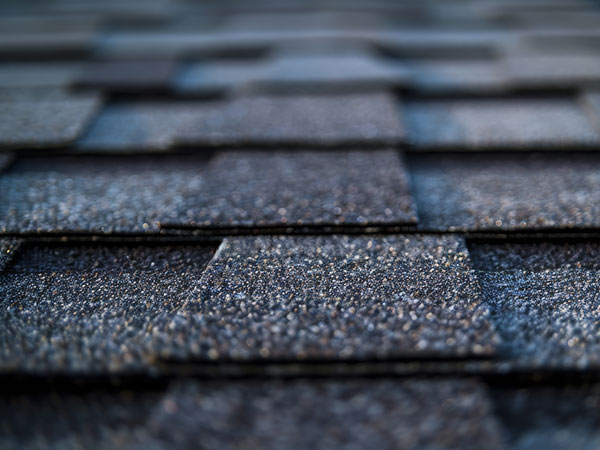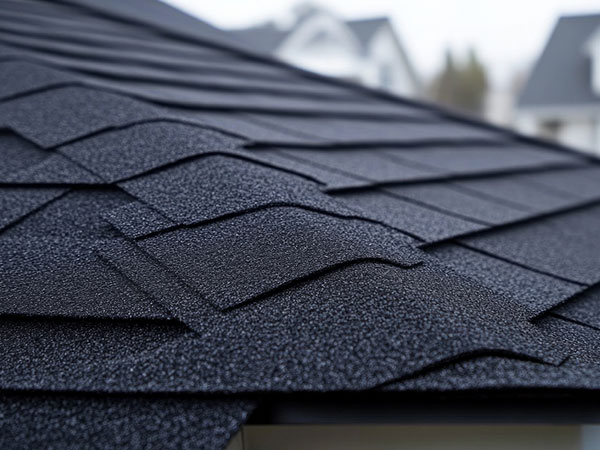The Role of Your Roof
Your roof is your home’s first shield against rain, snow, wind, and extreme temperatures. It helps control energy use, maintains comfort, and protects your most valuable investment, your home.
While most North American homes still use asphalt shingles, this is largely due to their low upfront cost and ease of installation.

Structure of an Asphalt Shingle
Each asphalt shingle consists of three main layers:
- Fiberglass Mat Core
A synthetic material that adds base strength and minimal fire resistance. - Asphalt Coating
A petroleum-based layer that makes the shingle waterproof but becomes brittle over time due to weather and UV exposure. - Mineral Granules
Coarse granules on the surface provide some UV protection and help reduce wind lift though they wear off with age and erosion.
Did you know?
Asphalt shingles are not recyclable and are one of the largest contributors to construction landfill waste in Canada.
How Asphalt Shingle Shed Water
Asphalt shingles are laid in an overlapping stair-step pattern. This design is meant to channel water efficiently:
- Rain strikes the top shingle.
- Water flows down over the mineral granules.
- It then continues under the edge of the next shingle and drains into the gutters.
This method works well when shingles are new and fully intact, but as they age, gaps, cracks, or lifting edges can allow moisture to penetrate the roof deck.

How Asphalt Shingle Function
Asphalt shingles provide short-term protection through a layered, sealed system:
Despite their widespread use, asphalt shingles require more maintenance, have a shorter lifespan, and pose greater environmental concerns than modern alternatives.
Why Homeowners Are Choosing Better Options

While asphalt shingles remain common, more homeowners are turning to metal roofing systems for long-term durability, energy efficiency, and environmental responsibility. Metal roofs are fully recyclable, last 40+ years, and reduce landfill waste and energy use over time.
